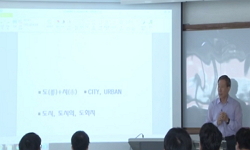<P><B>Abstract</B></P> <P>Although norovirus outbreaks are well-recognized to have strong winter seasonality relevant to low temperature and humidity, the role of artificial human-made features within geographical areas ...
http://chineseinput.net/에서 pinyin(병음)방식으로 중국어를 변환할 수 있습니다.
변환된 중국어를 복사하여 사용하시면 됩니다.
- 中文 을 입력하시려면 zhongwen을 입력하시고 space를누르시면됩니다.
- 北京 을 입력하시려면 beijing을 입력하시고 space를 누르시면 됩니다.


 국가R&D연구논문
국가R&D연구논문
Identification of environmental determinants for spatio-temporal patterns of norovirus outbreaks in Korea using a geographic information system and binary response models
한글로보기https://www.riss.kr/link?id=A107428421
- 저자
- 발행기관
- 학술지명
-
권호사항
-
-
발행연도
2016
-
작성언어
-
- 주제어
-
등재정보
SCI,SCIE,SCOPUS
-
자료형태
학술저널
-
수록면
291-299(9쪽)
- 제공처
-
0
상세조회 -
0
다운로드
부가정보
다국어 초록 (Multilingual Abstract)
<P><B>Abstract</B></P> <P>Although norovirus outbreaks are well-recognized to have strong winter seasonality relevant to low temperature and humidity, the role of artificial human-made features within geographical areas in norovirus outbreaks has rarely been studied. The aim of this study is to assess the natural and human-made environmental factors favoring the occurrence of norovirus outbreaks using nationwide surveillance data. We used a geographic information system and binary response models to examine whether the norovirus outbreaks are spatially patterned and whether these patterns are associated with specific environmental variables including service levels of water supply and sanitation systems and land-use types. The results showed that small-scale low-tech local sewage treatment plants and winter sports areas were statistically significant factors favoring norovirus outbreaks. Compactness of the land development also affected the occurrence of norovirus outbreaks; transportation, water, and forest land-uses were less favored for effective transmission of norovirus, while commercial areas were associated with an increased rate of norovirus outbreaks. We observed associations of norovirus outbreaks with various outcomes of human activities, including discharge of poorly treated sewage, overcrowding of people during winter season, and compactness of land development, which might help prioritize target regions and strategies for the management of norovirus outbreaks.</P> <P><B>Highlights</B></P> <P> <UL> <LI> A GIS and binary response models were used to predict norovirus outbreaks' patterns. </LI> <LI> Strong winter seasonality of norovirus outbreaks was confirmed. </LI> <LI> Local sewage treatment plants favored norovirus outbreaks. </LI> <LI> Compactness of the land development affected the occurrence of norovirus outbreaks. </LI> <LI> Overcrowding of people and cold temperature synergistically increased norovirus outbreaks. </LI> </UL> </P> <P><B>Graphical abstract</B></P> <P>[DISPLAY OMISSION]</P>




 ScienceON
ScienceON






